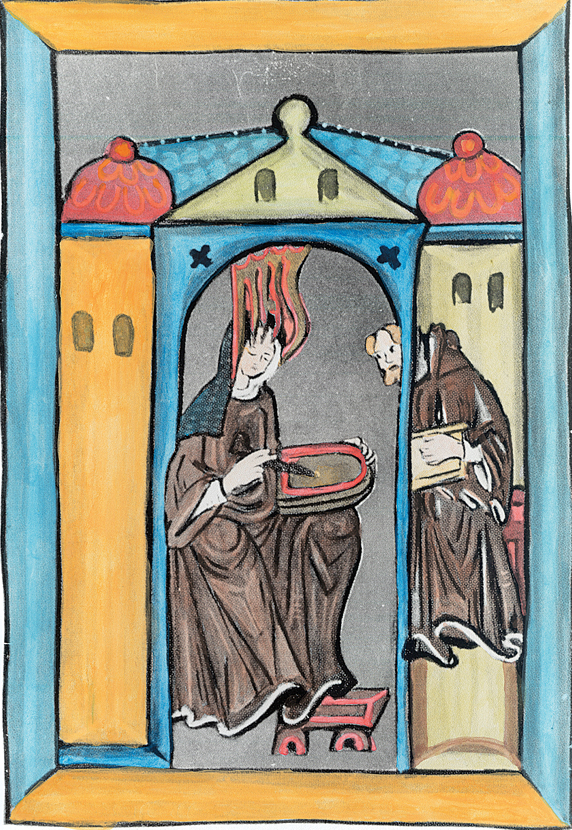A History of World Societies:
Printed Page 398
A History of World Societies Value
Edition: Printed Page 396
Individuals in Society
Hildegard of Bingen
Individuals in Society
Hildegard of Bingen

THE TENTH CHILD OF A LESSER NOBLE FAMILY, HILDEGARD (1098–
Obviously possessed of leadership and administrative talents, Hildegard left her abbey in 1147 to found the convent of Rupertsberg near Bingen. There she produced Physica (On the Physical Elements) and Causa et Curae (Causes and Cures), scientific works on the curative properties of natural elements; poems; a religious play; and several more works of mysticism. She carried on a huge correspondence with scholars, prelates, and ordinary people. When she was over fifty, she left her community to preach to audiences of clergy and laity, and she was the only woman of her time whose opinions on religious matters were considered authoritative by the church.
Hildegard’s visions have been explored by theologians and also by neurologists, who judge that they may have originated in migraine headaches, as she reports many of the same phenomena that migraine sufferers do: auras of light around objects, areas of blindness, feelings of intense doubt and intense euphoria. The interpretations that she develops come from her theological insight and learning, however, not from her illness. That same insight also emerges in her music, which is what she is best known for today. Eighty of her compositions survive — a huge number for a medieval composer — most of them written to be sung by the nuns in her convent, so they have strong lines for female voices. Many of her songs and chants have been recorded recently by various artists and are available on compact disk, as downloads, and on several Web sites.
QUESTIONS FOR ANALYSIS
- Why do you think Hildegard might have kept her visions secret at first? Why do you think she eventually sought church approval for them?
- In what ways were Hildegard’s accomplishments extraordinary given women’s general status in the Middle Ages?
Document Project
Why was Hildegard of Bingen considered a worthy instrument for the transmission of God’s word? Read excerpts from Hildegard’s correspondence, and then complete a quiz and writing assignment based on the evidence and details from this chapter.